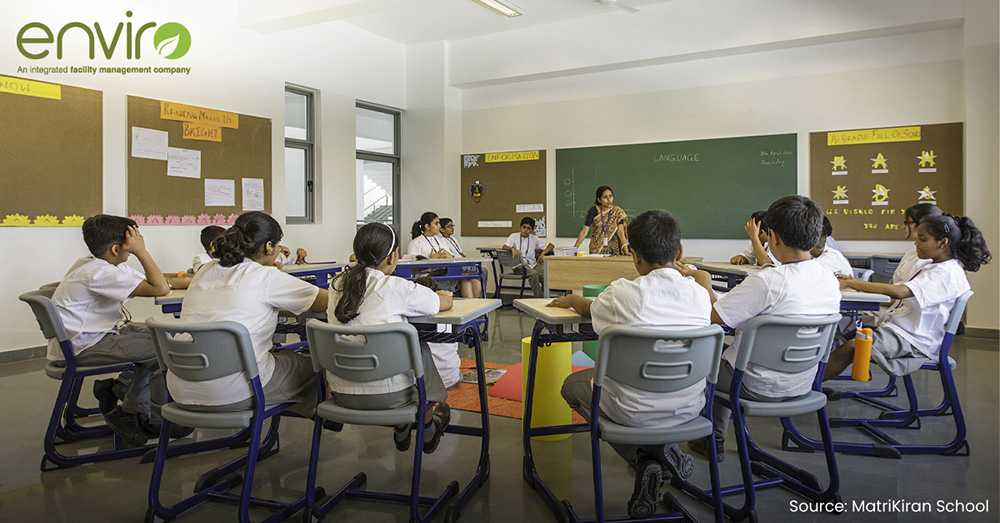In the realm of education, schools serve as the foundation for young minds to learn, grow and succeed. But behind the scenes, there is a crucial aspect that plays the most important role – Facility Management. Ensuring the smooth running of the school’s operations, safety and cleanliness is a task that falls on the shoulders of administrators. Efficient facilities management takes the guesswork and chaos out of running a school and creates a conducive learning environment. This blog offers a comprehensive set of tips for administrators to optimize their facility management practices to benefit both students and staff.
1. Comprehensive Maintenance Schedule
A well-planned maintenance schedule is essential to ensure that a school’s infrastructure remains in top condition. HVAC, water coolers, classrooms, corridors, playgrounds, restrooms etc. should undergo regular inspection to identify issues that require attention. Scheduled maintenance can help prevent minor problems from snowballing, ensuring the learning environment remains uninterrupted.
2. Prioritize Safety
Safety should be the foremost concern for school administrators. Conducting fire drills, establishing clear evacuation routes and ensuring emergency equipment is readily available are essential safety measures. Adequate training should be provided to staff on safety protocols including First Aid and CPR. Its crucial to keep emergency response plans up-to-date and to ensure the well-being of both students and staff.
3. Energy-efficient Initiatives
Embracing energy-efficient practices not only reduces operating costs but also contributes to a more sustainable and eco-friendly school environment. School administrators should invest in energy-efficient Lighting (LED and Solar Panels), Heating and Cooling solutions to minimize their energy consumption. Regular inspection and maintenance of these systems are vital to ensure optimal performance.
4. Leveraging Technology
Integrated Software for maintenance, IoT sensors for real-time monitoring, digital request systems and energy management tools streamline operations and improve resource allocation. Implementing these solutions enhance efficiency, promotes sustainability and ensures a conducive learning environment.
5. Creating a Conducive Learning Environment
In recent years, an array of environmental quality concerns have emerged, encompassing classroom acoustics, indoor air quality, water quality, energy efficiency etc. Addressing these issues demands a multifaceted approach by facility managers. Their efforts center on optimizing classroom environments for better acoustics, ensuring clean indoor air through regular maintenance, vigilantly monitoring and upholding stringent water quality standards, and implementing energy-saving strategies. By conducting regular checks and fostering a culture of sustainability, facility managers work towards creating a healthier and more conducive learning environment for students and staff alike.
6. Promoting Sustainability Initiatives
In today’s era, instilling eco-conscious practices within school premises is paramount. Facility managers can spearhead sustainable initiatives among students and staff. Implementing recycling programs, organizing environmental awareness campaigns and incorporating lessons on sustainability into the curriculum foster a culture of environmental stewardship. Moreover, undertaking green building initiatives, such as installing rainwater harvesting systems not only reduces the environmental impact but also provides practical lessons in sustainability.
Conclusion
Facility Management in Schools is a linchpin for success. These tips serve as a guide, empowering the custodians in the mission to uphold safety, sustainability and efficiency. From meticulous maintenance schedules that prevent disruptions to embracing technology and sustainability initiatives for streamlined operations, these strategies fortify the pillars of a conducive learning environment. By integrating these practices, facility managers only manage spaces but nurture values that transcend the physical realm of schools, shaping the future of education and the minds of tomorrow.





 WhatsApp Business +91 88000 09776
WhatsApp Business +91 88000 09776
 CSC
CSC  WhatsApp Business
WhatsApp Business 